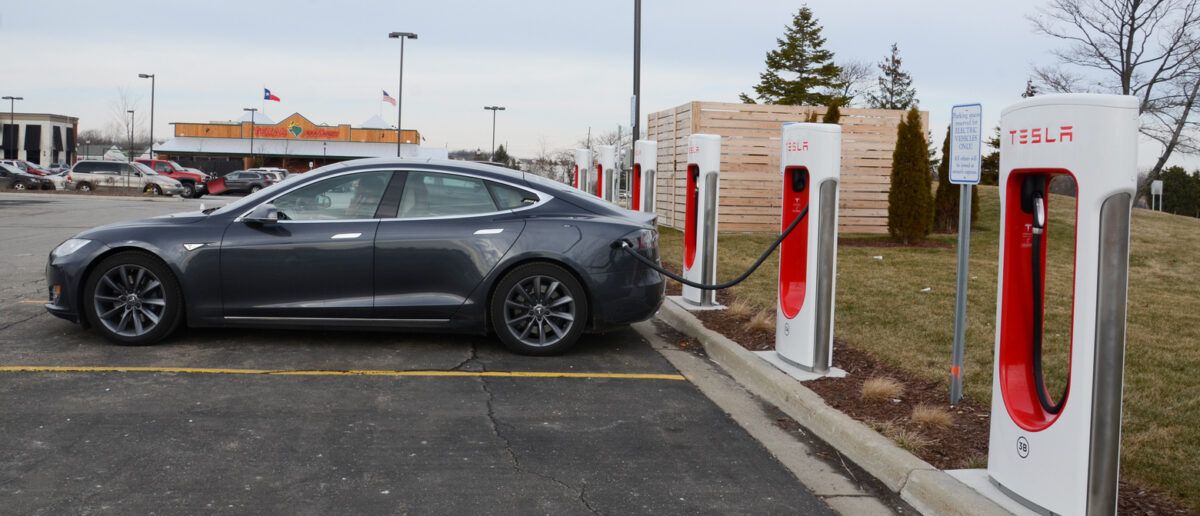Overview:
- Michigan's proposed clean fuels standard aims to create a carbon market, allowing biofuel producers, charging stations, and electricity providers for transportation to earn credits, which can be sold to high-emission industries.
- Environmental groups, however, criticize the bill, arguing it promotes polluting fuels like biogas from factory farms and ethanol, while reinforcing fossil fuel interests.
-They highlight that biofuels contribute to factory farm expansion, water pollution, and increased carbon emissions, noting corn ethanol's carbon intensity is 24% higher than gasoline.
Michigan legislation to establish a clean fuels standard is drawing heat from environmental groups who say it encourages polluting fuel sources like biogas from factory farms and ethanol while further entrenching fossil fuel interests.
The bill, SB 275, would create a carbon market where producers or importers of biofuels, charging stations or providers of electricity that is used as transportation fuel can receive credits that can be sold to high emitting industries.
Environmental groups like the Michigan Sierra Club and the Environmental Law and Policy Center oppose the bill, arguing it would do little to reduce emissions. Instead, they said, it would greenwash oil and natural gas. Biofuels generally need to be mixed with oil and gas to be usable.
Advocates point out that similar legislation in California has given large credits to biogas produced with cow manure, leading to a growth in factory farms that contribute to water pollution and methane production. Methane is a potent greenhouse gas.
Meanwhile, businesses and other groups say the clean fuels standard would benefit the energy transition by delivering credits needed to invest in electric charging stations and encourage the adoption of electric fleet vehicles.
Tim Minotas, deputy legislative and political director for the Michigan Sierra Club, says the model that Michigan plans to use to measure the carbon intensity of fuels, which was also employed in California, doesn’t account for other environmental problems.
“It doesn’t look at risk assessment holistically and the potential harms of biofuel reliance, such as risks to food prices, food insecurity, biodiversity loss, air and water pollution and ecosystem degradation,” he said.
He added that California’s program has given substantial credits to fuels that aren’t low carbon like biomethane and renewable diesel. Biomethane is predominantly methane gas that has been marketed as “renewable natural gas,” while renewable diesel is a fuel made from sources like vegetable oils and animal fat.
Eighty percent of California’s low carbon fuel standard credits have gone to biofuels rather than electric vehicles.
However, Charles Griffith, director of the nonprofit Ecology Center’s climate and energy program, said California will begin issuing more credits for electrification as EV adoption increases.
A report by the California Air Resources Board, which regulates the state’s Low Carbon Fuel Standard program, shows electricity making up a growing share of credits over the next two decades, accounting for 48% of total credits by 2045.
The Ecology Center helped model what kind of credits were likely to be generated in Michigan and found that around half would be spent on electrification in the ten years following the adoption of a clean fuels standard.
“Every other state that’s come up with money for electrification has had some kind of climate law that generates revenues,” Griffith said, adding that the clean fuels standard could provide funding that would be difficult to come up with in the state budget.
‘A drop in the fossil fuel bucket’
Some environmental advocates said the clean fuels standard would be a lifeline for the fossil fuel industry, while allowing for more emissions in areas that already struggle with pollution.
“What a lot of people don’t understand is that a relatively small amount of these biofuels are blended with fossil fuels,” said Dr Cheryl Ruble, a physician and opponent of manure biodigesters. “It’s a drop in the fossil fuel bucket.”
For example, “renewable natural gas” or biogas generated from manure and landfill waste in biodigesters is generally blended at a rate of around 1-5% with standard natural gas, according to a letter sent by Michigan environmental groups to state legislators. Natural gas accounts for 37% of U.S. carbon emissions. Ethanol is usually mixed with gasoline at a ratio of 10% ethanol to 90% gas.
However, renewable diesel could almost entirely replace conventional diesel. But the explosion of renewable diesel use in California has created its own environmental concerns as the supply of waste oil runs low. This could drive an increase in deforestation if land is cleared to produce palm oil or other crops to manufacture renewable diesel.
Ruble said that biogas is the most valuable fuel source because of the lucrative credits it generates, attracting investment from major industry players like DTE Energy, Consumers Energy, and the BlackRock-owned Vanguard Renewables. She said this could provide credits that allow for further emissions from fossil fuel sources that are often located in low-income areas and communities of color.
Critics say biofuels increase pollution and factory farming
Environmental groups say that biofuels have led to the expansion of factory farms and increases in water pollution and carbon emissions.
In California and Iowa, carbon credits and other incentives have driven an increase in concentrated animal feeding operations (CAFOs). This has created a risk for workers on farms that often lack oversight from the U.S. Occupational Safety and Health Administration because of their small size. Manure stored in lagoons can release deadly hydrogen sulfide, which can cause workers to asphyxiate and die.
learn more
Dismay as Michigan hands out millions of dollars in ‘low carbon’ grants for gas projects
Two-thirds of the money went to support expansion of natural gas and biogas infrastructure.
Detroit, Biden bet big on electric vehicles; critic says that’s ‘a very American answer to climate change’
As new vehicle announcements go, it’s hard to top Ford’s recent reveal of its brand-spanking new electric F-150 Lightning pickup truck. President Joe Biden, a self-professed “car guy,” flew in on Air Force One to mark the event. And he wasn’t there to simply cut a ribbon or stick a ceremonial shovel in the ground,…
Biodigesters also produce ‘digestate’ as a byproduct, which the industry touts as an organic fertilizer. However, research shows it contains nutrients that are highly concentrated and more mobile in the environment than manure, with the potential to contribute to water pollution and toxic algae blooms.
Environmental groups have also challenged climate claims around biogas, saying that high leakage rates make it a net emitter of greenhouse gasses.
Meanwhile, ethanol is generally produced with corn, a crop that often requires large amounts of fertilizer and water.
An increase in acreage devoted to corn and corresponding fertilizer runoff could contribute to harmful algal blooms in Lake Erie, said Megan Tinsley, water policy director for the Michigan Environmental Council.
A 2022 study found the carbon intensity of corn ethanol was 24% higher than traditional gasoline because large quantities of land were put into corn production that had previously been used for other crops and pasture or reserved for conservation purposes.
Despite these issues, biofuels enjoy support from lawmakers across the country. At the federal level, the Inflation Reduction Act is slated to invest $9.4 billion in biofuels by 2031. And although Michigan’s clean fuels standard legislation has not received a hearing since being introduced by State Sen. Sam Singh (D-East Lansing) in April, it has 14 co-sponsors.”One of the biggest obstacles we face is a lot of Democrats somehow have been led to believe that this is a good climate change solution,” Ruble said.



